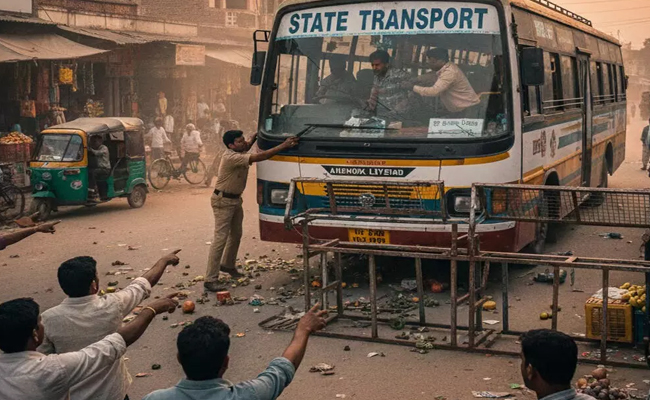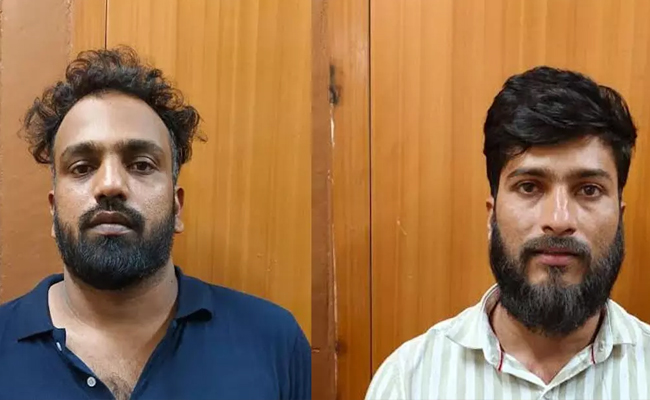New Delhi: Right-wing Twitter users on Wednesday evening started a campaign on the micro-blogging site, calling for a boycott of TIME magazine after it listed Shaheen Bagh ‘Dadi’ Bilkis among the 100 Most Influential People of the World in 2020.
The list also includes PM Narendra Modi, actor Ayushmann Khurrana, Google CEO Sundar Pichai are among others.
While PM Modi was listed in the "Leaders" category, Bilkis, a.k.a "Dadi of Shaheen Bagh", was featured under "Icons".
Bilkis is among those better known as the 'Dadis (Grandmothers) of Shaheen Bagh' and had led the protests from the front, shedding the comfort of their homes.
The profile of Bilkis in the TIME magazine list, written by journalist and writer Rana Ayyub, says she "became the voice of the marginalized in India".
Twitter users called for boycotting the magazine alleging that it was listing someone “Who prompted riots” in the list of “World’s Most Influential People in 2020”.
NOTE: The claims made in the tweets embedded below or the ideas presented in them are those solely of the users. Vartha Bharati does not guarantee the authenticity of any of the claims or does not necessarily endorse, support the ideas, views posted by any of the users.
One more proof of how western agencies and certain anarchist organizations are Propaganding a false narrative of India's political situations.
— Vinay Tendulkar (@TendulkarBJP) September 23, 2020
All they want is to defame the culture and values of Indic civilization so that they can pull us down to their level.
#BoycottTIME
It's really hard to understand why #Bilkis was considered in most influential persons.
— Monty Rana (@montyyrana) September 23, 2020
Did she influence a significant amount of mass towards something productive?
Saperatism is quite easy to propagate as it's destructive in nature. It looks more like biased media. #BoycottTIME pic.twitter.com/XbEjuLyRWF
#TIMEMagazine have placed Bilkis bano among "100 most influential people" in the world.
— प्रवीण चौहान ? 40k (@ChauhanSaabPC) September 23, 2020
How can they praise a woman who Face of Riots in New Delhi?
Time to #BoycottTIME pic.twitter.com/PzWLs7JXYQ
We don't need any certificate from these West ppl for our PM.. Ye hamesha se aise hi divide n rule game play karte h #BoycottTIME pic.twitter.com/9iHknJw5OQ
— Amit Sharma (@AmitsharmaGRENO) September 23, 2020
People who don’t know what they stand for are termed heroes. That is the vile power of left media. #boycottTime https://t.co/G0NO0rKTGM
— Ravi Gupta®️ (@RaviGuptaINDIAN) September 23, 2020
#BoycottTIME jai hind
— Kusum Tomar (@KusumTomar19) September 23, 2020
#BoycottTIME
— Sakshi Gupta (@sakshigupta76) September 23, 2020
That failed Shaheen bagh protester Bilkis featured on Time magazine..
Meanwhile Rahul Gandhi who is not featured...?? pic.twitter.com/kkHZKoyFeI
These rioters were there for Wages , Biryani and time rewarded them for being traitors.#BoycottTime#BoycottTIME pic.twitter.com/0p3SM0nDtW
— अहं भारतीयः (@Skylark_Indian) September 23, 2020
Suffering from Shortage of Toilet Paper ?
— Roshan singh (@Roshans82660478) September 23, 2020
No worries, we have a lot of it. ??#StandWithGilgitBaltistan#IndiaTrustModi #BoycottTIME pic.twitter.com/AfblBHsBd5#BoycottTIME pic.twitter.com/ZTt126t8KN
#BoycottTime
— Meet Patel (@MeetPat92472800) September 23, 2020
This magazine is utterly ridiculous because whichever It is praisefully prescribed, has to be whether an Anti-national or a communist. Boycott this basket case. ??????? pic.twitter.com/8Fb4yzczof
#BoycottTIME Actually Times Magazine does need to add our PM We all know him and how powerful is he? They are free to show their cheap mind set in their double standard Magazine.
— Akanksha Singh (@Akanksha101294) September 23, 2020
#BoycottTime Must Must Must
— AJIT SINGH (@ajits1072) September 23, 2020
Let the Truth be known. If you read VB and like VB, please be a VB Supporter and Help us deliver the Truth to one and all.
Bengaluru: Vidyaranyapura police have arrested four persons, including a man posing as a Police Sub-Inspector (PSI), for allegedly breaking into a house, threatening the occupants, and extorting money while wearing police uniforms.
The arrested accused have been identified as Mallikarjuna, Pramod, Vinay, and Hrithik.
Police said the accused had hatched a plan to pose as police personnel, conduct fake raids, and extort money from residents by intimidation.
ALSO READ: Bantwal police arrest two men for illegal sale of narcotics, seize two vehicles, 810 gm ganja
According to the police, Mallikarjuna had failed the PSI examination twice and later falsely projected himself as a PSI. He allegedly conducted photo shoots in his hometown, Siraguppa, wearing a police uniform, baton, cap, and shoes, claiming to be serving as a PSI in Bengaluru.
On December 7, the four accused allegedly went to the house of Naveen in the Vidyaranyapura limits, threatened him with a stick and an iron rod, and claimed they had information that he was selling ganja. Under the pretext of searching, they allegedly extorted ₹87,000 through bank transfer, ₹53,000 in cash kept in the house, and ₹2,000 from his wallet.
Following Naveen’s complaint, Vidyaranyapura police registered a case and launched an operation, leading to the arrest of all four accused. Police have seized ₹45,000 in cash and the car used to commit the crime.
Further investigation is underway.





